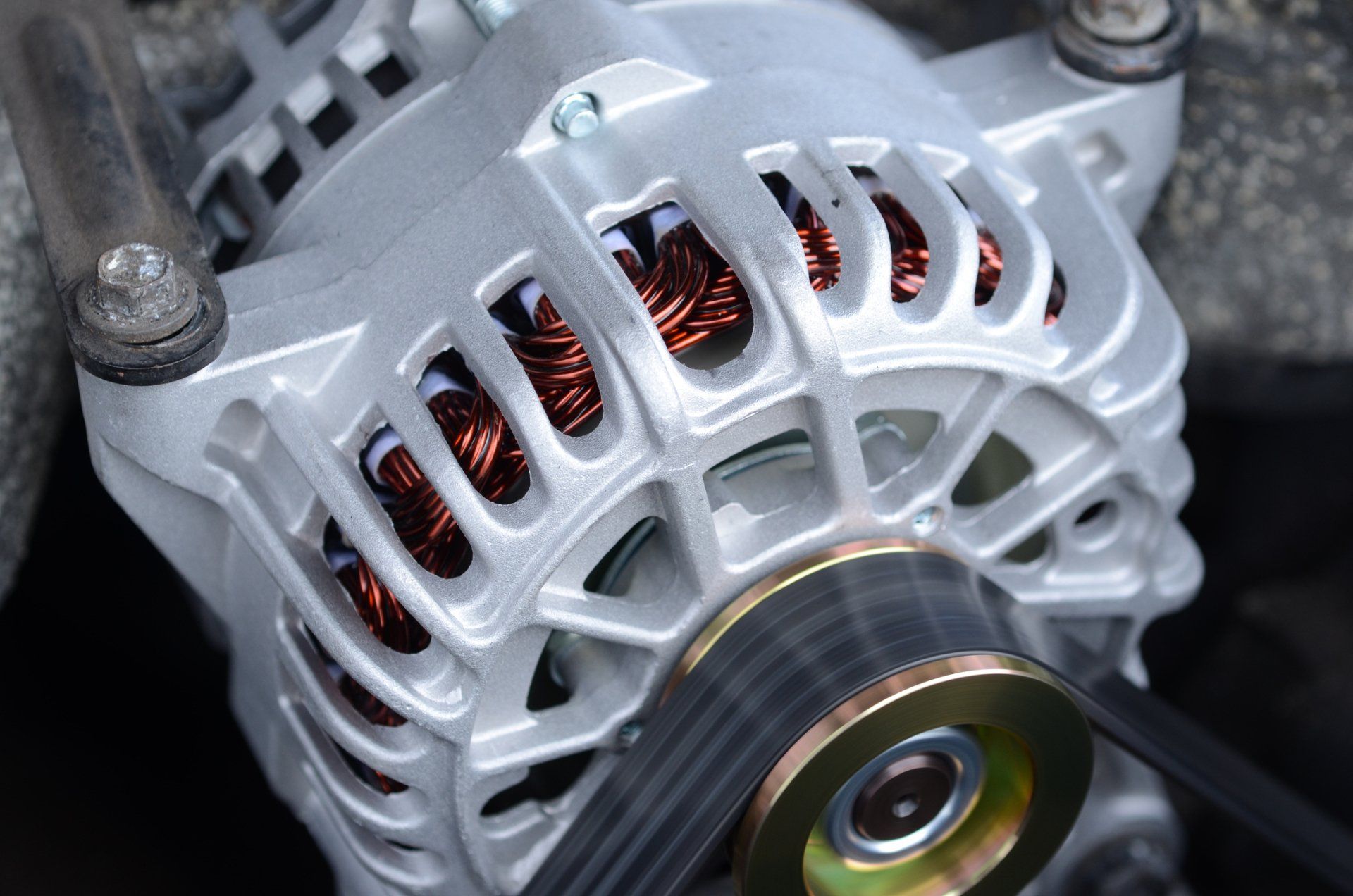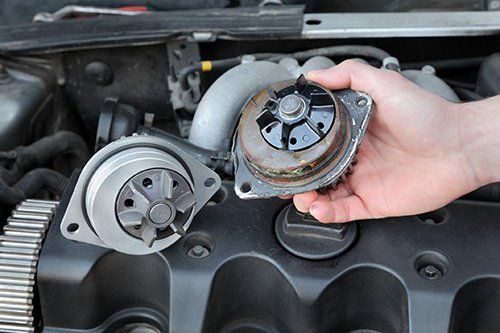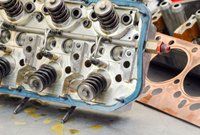
Virtually every car, truck, and SUV produced today contains a rack-and-pinion steering system. The rack and pinion translates the rotation of your steering wheel into the corresponding linear movement of your wheels. As the pinion gear spins in concert with your steering column, it causes the steering rack to move from side to side.
Over time, the exposed position of the steering rack often causes it to suffer damage and wear. Eventually, the rack may cease to perform appropriately. Unfortunately, many people continue to drive with a damaged steering rack simply because they don't understand the symptoms of this common issue. Learn about four common symptoms of a failing steering rack.
1. Dirty Steering Fluid
The vast majority of vehicles on the road today contain power steering systems, which greatly reduce the amount of effort necessary to turn a car's wheels. Power steering fluid not only helps to move your steering rack, but it also acts as a vital lubricant and coolant. Over time, the steering fluid accumulates bits of dirt and debris that negatively affect its performance.
Dirty fluid hastens the failure rate of a steering rack by increasing the amount of friction acting on it. To ensure proper functioning, you should periodically flush your power steering fluid and replace it with new fluid. Yet dirty fluid may also indicate that your steering rack has reached the end of its life span.
A steering rack that has succumbed to excessive amounts of corrosion, for instance, will deposit excessive amounts of debris in even the freshest steering fluid. Likewise, if internal seals or bearings have begun to degrade, the results can often be seen in the quality of your fluid. If your power steering fluid appears dark or cloudy, contact a technician for a professional evaluation.
2. Fluid Leak
You can gain a wealth of valuable information about your car's health by keeping an eye on the floor of your garage or driveway. If you have noticed red or reddish-brown puddles beneath your car, you may have a power steering fluid leak. You can often verify this hypothesis by monitoring the level of your power steering fluid.
A fluid leak may occur in a variety of places within your power steering system, including the steering rack. Steering racks develop leaks most commonly at the place where they attach to the tie rods. Although this connection point contains a fluid-proof seal, temperature swings, debris damage, and chemical exposure often cause the seal to fail.
Unfortunately, the seals used between your steering rack and the tie rods cannot be replaced. However, technicians can often repair relatively minor leaks by restoring the existing seals. More serious forms of seal damage, on the other hand, usually necessitate replacement of the entire steering rack.
3. Steering Dead Spot
The steering rack consists of a long metal bar whose surface contains a series of grooved teeth. These allow the steering rack to mesh with the face of the pinion. Even in a well-lubricated system, contact between the two components creates friction. Over time, this friction abrades the surface of the steering rack's gears.
As the wear grows more and more severe, it begins to impact steering performance. The steering rack gears corresponding to your steering wheel's neutral position experience the most wear. As a result, you may notice that your steering wheel has developed a dead or unresponsive spot near its center position.
The driveshaft may not respond until you have turned your wheel to a certain position, at which point the less worn gear teeth finally engage. If you have begun experiencing this issue, you must replace your steering rack as soon as possible. For more information about buying a used steering rack, reach out to the auto part experts at Midway Garage & Salvage LLC.
Over time, the exposed position of the steering rack often causes it to suffer damage and wear. Eventually, the rack may cease to perform appropriately. Unfortunately, many people continue to drive with a damaged steering rack simply because they don't understand the symptoms of this common issue. Learn about four common symptoms of a failing steering rack.
1. Dirty Steering Fluid
The vast majority of vehicles on the road today contain power steering systems, which greatly reduce the amount of effort necessary to turn a car's wheels. Power steering fluid not only helps to move your steering rack, but it also acts as a vital lubricant and coolant. Over time, the steering fluid accumulates bits of dirt and debris that negatively affect its performance.
Dirty fluid hastens the failure rate of a steering rack by increasing the amount of friction acting on it. To ensure proper functioning, you should periodically flush your power steering fluid and replace it with new fluid. Yet dirty fluid may also indicate that your steering rack has reached the end of its life span.
A steering rack that has succumbed to excessive amounts of corrosion, for instance, will deposit excessive amounts of debris in even the freshest steering fluid. Likewise, if internal seals or bearings have begun to degrade, the results can often be seen in the quality of your fluid. If your power steering fluid appears dark or cloudy, contact a technician for a professional evaluation.
2. Fluid Leak
You can gain a wealth of valuable information about your car's health by keeping an eye on the floor of your garage or driveway. If you have noticed red or reddish-brown puddles beneath your car, you may have a power steering fluid leak. You can often verify this hypothesis by monitoring the level of your power steering fluid.
A fluid leak may occur in a variety of places within your power steering system, including the steering rack. Steering racks develop leaks most commonly at the place where they attach to the tie rods. Although this connection point contains a fluid-proof seal, temperature swings, debris damage, and chemical exposure often cause the seal to fail.
Unfortunately, the seals used between your steering rack and the tie rods cannot be replaced. However, technicians can often repair relatively minor leaks by restoring the existing seals. More serious forms of seal damage, on the other hand, usually necessitate replacement of the entire steering rack.
3. Steering Dead Spot
The steering rack consists of a long metal bar whose surface contains a series of grooved teeth. These allow the steering rack to mesh with the face of the pinion. Even in a well-lubricated system, contact between the two components creates friction. Over time, this friction abrades the surface of the steering rack's gears.
As the wear grows more and more severe, it begins to impact steering performance. The steering rack gears corresponding to your steering wheel's neutral position experience the most wear. As a result, you may notice that your steering wheel has developed a dead or unresponsive spot near its center position.
The driveshaft may not respond until you have turned your wheel to a certain position, at which point the less worn gear teeth finally engage. If you have begun experiencing this issue, you must replace your steering rack as soon as possible. For more information about buying a used steering rack, reach out to the auto part experts at Midway Garage & Salvage LLC.


















